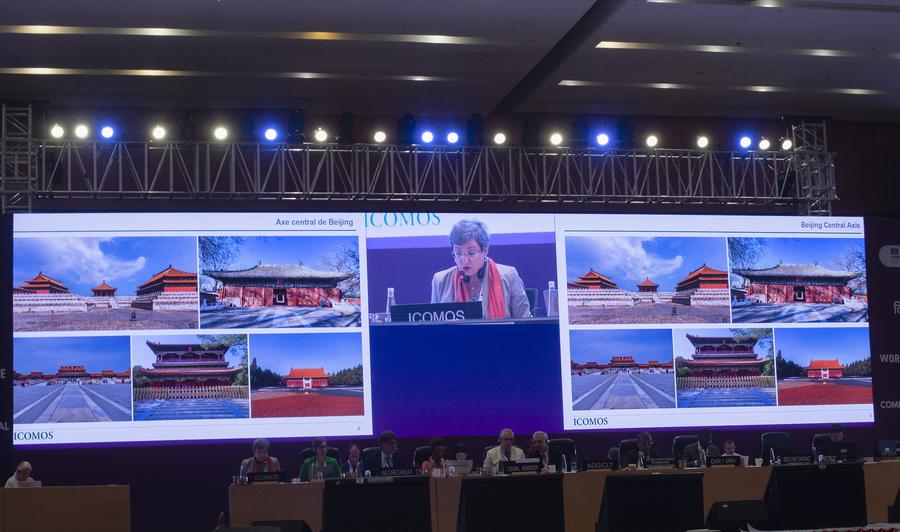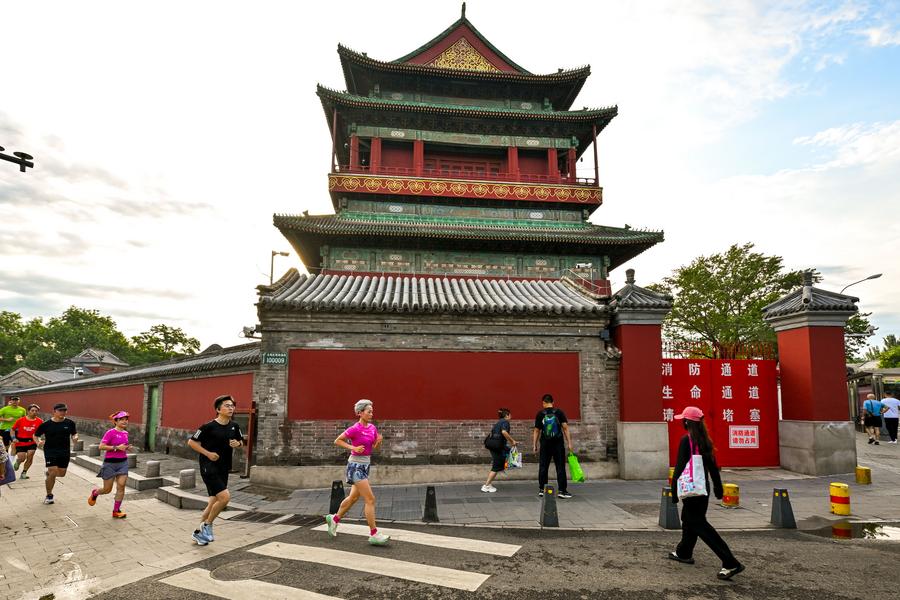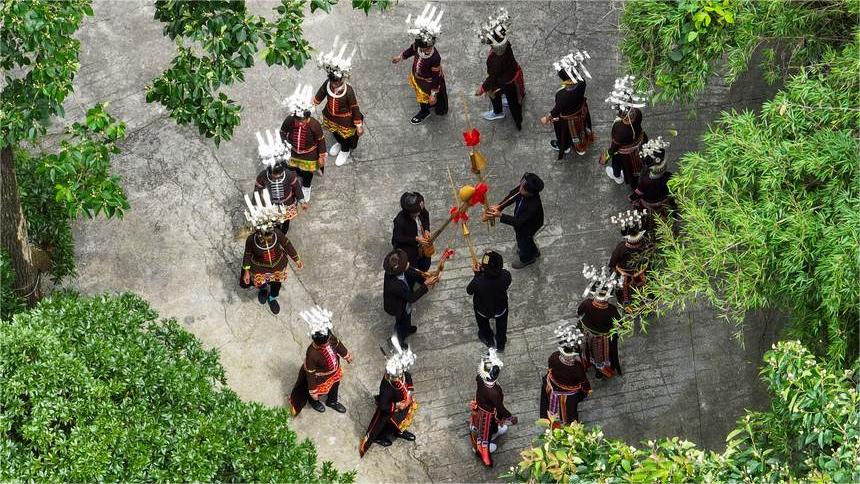Beijing Central Axis on UNESCO World Heritage List

Photos of Beijing Central Axis are displayed on a screen upon its inscription on the World Heritage List by the United Nations Educational, Scientific and Cultural Organization (UNESCO) during the 46th session of the UNESCO World Heritage Committee held in New Delhi, India, July 27, 2024. (Xinhua/Javed Dar)
The UNESCO World Heritage Committee recognizes the integrity, authenticity, and protection and management status of the Beijing Central Axis, noting it represents a unique type in the history of world cities and makes significant contributions to the history of urban planning worldwide.
NEW DELHI, July 28 (Xinhua) -- The United Nations Educational, Scientific and Cultural Organization (UNESCO) on Saturday announced the inclusion of the Beijing Central Axis: A Building Ensemble Exhibiting the Ideal Order of the Chinese Capital, into its world heritage list.
So far, China has a total of 59 World Heritage Sites.
Beijing Central Axis, initially established in the 13th century and formed in the 16th century, runs through the old city of Beijing from north to south. It has become the longest urban axis in the world today, spanning 7.8 kilometers.
The heritage area of the Beijing Central Axis covers 589 hectares, with a buffer zone of 4,542 hectares. Its location, layout, urban form, and design reflect the ancient Chinese tradition of urban planning, serving as an important emblem that highlights the distinctive characteristics of Chinese civilization.

Running enthusiasts run past the Drum Tower in Beijing, capital of China, July 20, 2024. The Beijing Central Axis is a running route full of cultural vibe in the eyes of running enthusiasts. (Xinhua/Liu Jinhai)
The UNESCO World Heritage Committee recognized the integrity, authenticity, and protection and management status of the Beijing Central Axis. It also acknowledged the area's continued role as a social and political center in Chinese society.
The committee believed that the Beijing Central Axis represented a unique type in the history of world cities, embodied traditional Chinese philosophical concepts of "Zhong" (centrality) and "He" (harmony), and made significant contributions to the history of urban planning worldwide.
The organization also highly praised the Chinese government's tremendous efforts and outstanding achievements in protecting and preserving the cultural heritage of the ancient city of Beijing.
Photos
Related Stories
Copyright © 2024 People's Daily Online. All Rights Reserved.









